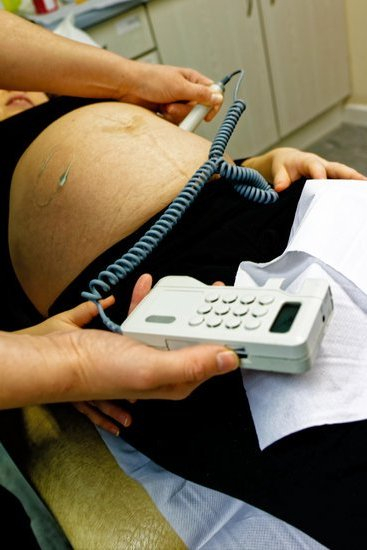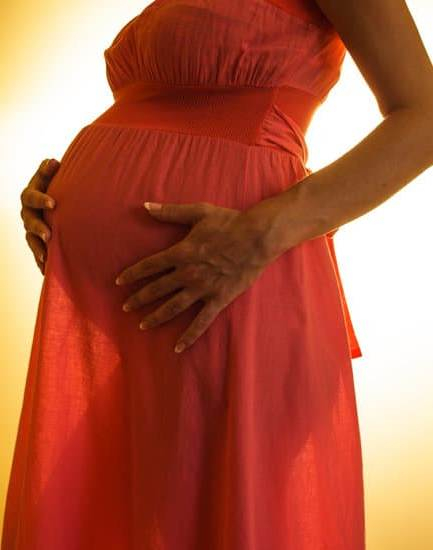There is no one definitive answer to the question of what causes infertility. In fact, infertility can be caused by a variety of factors including environmental exposures, lifestyle choices, and health conditions. However, one of the most common causes of infertility is problems with a woman’s ovaries.
The ovaries are two small, almond-shaped organs that are located on either side of the uterus. The ovaries are responsible for producing eggs, and they also produce the hormones estrogen and progesterone. These hormones are important for regulating the menstrual cycle and preparing the body for pregnancy.
If a woman has problems with her ovaries, it can impact her ability to conceive. Some common problems that can affect the ovaries include:
· Ovarian cysts: Cysts are fluid-filled sacs that can form on the ovaries. They can cause pain and infertility.
· Polycystic ovary syndrome (PCOS): PCOS is a condition that affects the ovaries. It can cause infertility, as well as a variety of other health problems.
· Ovarian cancer: Ovarian cancer is a rare but serious cancer that can affect the ovaries. It can cause infertility as well as other symptoms.
If a woman is having problems with her ovaries, she may need to undergo fertility treatments in order to conceive. Some common fertility treatments that can help to overcome ovary problems include:
· Ovarian stimulation: This treatment involves using medication to stimulate the ovaries to produce eggs.
· In vitro fertilization (IVF): IVF is a procedure in which eggs are removed from the ovaries and then fertilized with sperm in a lab. The fertilized eggs are then returned to the woman’s uterus to implant.
· Egg donation: In egg donation, eggs from a donor are used to help a woman conceive.
If you are having problems with ovaries and are considering fertility treatments, it is important to talk to your doctor. He or she can help you determine which treatment is best for you.
How Many Couples Have Fertility Issues
?
There are a lot of myths and misconceptions about fertility and fertility issues. One of the most common myths is that infertility is only a problem for women. The truth is, infertility can affect both men and women.
In fact, according to the National Institute of Health, approximately one-third of all couples in the United States have difficulty conceiving a child. This means that millions of couples are struggling with infertility.
There are many different causes of infertility. Some couples may have fertility issues because of problems with the woman’s reproductive system. Other couples may have fertility issues because of problems with the man’s reproductive system.
There are also a number of couples who have fertility issues because of a combination of problems with both the woman’s and the man’s reproductive systems. And, finally, there are a number of couples who have unexplained infertility.
If you are having trouble conceiving a child, it is important to seek help from a fertility specialist. A fertility specialist can help you determine the cause of your infertility and recommend the best course of treatment.
Anchorage Fertility Clinic
is a full-service fertility clinic in Anchorage, Alaska. We offer a wide range of fertility treatments, from basic fertility treatments such as intrauterine insemination (IUI) and in-vitro fertilization (IVF) to more complex treatments such as preimplantation genetic diagnosis (PGD) and donor egg. We also offer a wide range of fertility services for men, including sperm analysis and sperm donation.
Our clinic is staffed by a team of highly experienced and skilled fertility specialists who are dedicated to helping you achieve your goal of becoming parents. We understand that infertility can be a difficult and emotionally challenging experience, and we are here to support you every step of the way. We offer a range of fertility treatments that have been proven to be effective, and we are constantly expanding our treatment options to offer our patients the best possible chance of success.
If you are struggling with infertility and are looking for a trusted and reliable fertility clinic, Anchorage Fertility Clinic is the perfect choice. We offer a wide range of fertility treatments and services, and we are committed to providing our patients with the highest level of care. Contact us today to schedule a consultation, and let us help you start your journey to parenthood.
Fertility Specialist Rhode Island
There are many reasons why someone might seek the help of a fertility specialist. Some couples are trying to conceive a child naturally, while others may be using assisted reproductive technologies (ART) such as in vitro fertilization (IVF). Whatever the reason, a fertility specialist can provide the necessary guidance and support to help you achieve your goal.
If you are trying to conceive naturally, a fertility specialist can help you to identify any potential obstacles and provide advice on how to overcome them. If you are using ART, a fertility specialist can help you to choose the best treatment for your needs and monitor your progress. They can also provide support and advice throughout the process.
If you are considering using ART, it is important to choose a fertility specialist who is experienced and qualified. The American Society for Reproductive Medicine (ASRM) maintains a database of fertility specialists who have met its rigorous standards. You can also ask your friends or family for recommendations.
When choosing a fertility specialist, it is important to consider their experience, qualifications, and approach to treatment. You should also feel comfortable talking to them and ask any questions you have. A good fertility specialist will be supportive and understanding, and will work with you to achieve your goal of becoming a parent.
Fertility Rate.
The fertility rate is the average number of children that are born per woman over her lifetime. A fertility rate of 2.1 is needed to maintain a population size. This means that on average, each woman will have 2.1 children in her lifetime.
The fertility rate has been declining in the United States for the past few decades. In 1970, the fertility rate was 3.7 children per woman. By 2014, the fertility rate had fallen to 1.9 children per woman. This decline is due to a number of factors, including increased use of contraception, increased participation of women in the workforce, and increased average age of women at first marriage.
The fertility rate is also declining in other developed countries. In Japan, the fertility rate has fallen to 1.4 children per woman. In Germany, the fertility rate has fallen to 1.3 children per woman. In Italy, the fertility rate has fallen to 1.2 children per woman.
One reason for the decline in fertility rates is that people are waiting longer to have children. In the United States, the average age of women at first birth has increased from 21.4 in 1970 to 26.3 in 2014. This increase in average age is due to a number of factors, including increased participation of women in the workforce and increased average age of women at first marriage.
The decline in fertility rates is also due to increased use of contraception. In the United States, the use of contraception has increased from 54% in 1965 to 78% in 2014. The use of contraception has increased in other developed countries as well. In Japan, the use of contraception has increased from 24% in 1970 to 73% in 2014. In Germany, the use of contraception has increased from 38% in 1970 to 64% in 2014. In Italy, the use of contraception has increased from 26% in 1970 to 59% in 2014.
The decline in fertility rates is also due to increased participation of women in the workforce. In the United States, the percentage of women in the workforce has increased from 32% in 1970 to 47% in 2014. In Japan, the percentage of women in the workforce has increased from 24% in 1970 to 47% in 2014. In Germany, the percentage of women in the workforce has increased from 38% in 1970 to 58% in 2014. In Italy, the percentage of women in the workforce has increased from 26% in 1970 to 52% in 2014.
The decline in fertility rates is also due to the increased average age of women at first marriage. In the United States, the average age of women at first marriage has increased from 20.3 in 1970 to 27.5 in 2014. In Japan, the average age of women at first marriage has increased from 20.5 in 1970 to 29.3 in 2014. In Germany, the average age of women at first marriage has increased from 22.8 in 1970 to 30.6 in 2014. In Italy, the average age of women at first marriage has increased from 21.3 in 1970 to 30.3 in 2014.
The decline in fertility rates is also due to the declining birth rate. In the United States, the birth rate has fallen from 24.7 births per 1,000 people in 1970 to 14.2 births per 1,000 people in 2014. In Japan, the birth rate has fallen from 24.5 births per 1,000 people in 1970 to 8.4 births per 1,000 people in 2014. In Germany, the birth rate has fallen from 16.4 births per 1,000 people in 1970 to 9.3 births per 1,000 people in 2014. In Italy, the birth rate has fallen from 14.5 births per 1,000 people in 1970 to 8.3 births per 1,000 people in 2014.

Welcome to my fertility blog. This is a space where I will be sharing my experiences as I navigate through the world of fertility treatments, as well as provide information and resources about fertility and pregnancy.





